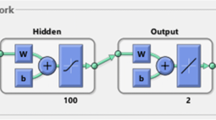Abstract
Cumulative Grade Point Average (CGPA) prediction is an important area for understanding tertiary education performance trend of students and identifying the demographic attributes to devise effective educational strategies and infrastructure. This paper aims to analyze the accuracy of CGPA prediction of students resulted from predictive models, namely the ordinary least square model (OLS), the artificial neural network model (ANN) and the adaptive network based fuzzy inference model (ANFIS). We have used standardized examination (Secondary School Certificate and High School Certificate) results from secondary and high school boards and current CGPA in respective disciplines of 1187 students from Independent University, Bangladesh from the period of April 2013 to April 2015. Evaluation measures such as- Mean absolute error, root mean square error and coefficient of determination are used as to evaluate performances of above-mentioned models. Our findings suggest that the mentioned predictive models are unable to predict CGPA values of the students accurately with currently used parameters.
Access this chapter
Tax calculation will be finalised at checkout
Purchases are for personal use only
Similar content being viewed by others
References
Hien, N.T.N., Haddawy, P.: A decision support system for evaluating international student applications. In: 37th ASEE/IEEE Frontiers in Education Conference, Milwaukee (2007)
Oladokun, V., Adebanjo, A., Charles-Owaba, O.: Predicting students’ academic performance using artificial neural network. Pac. J. Sci. Technol. 9 (2008)
Wang, T., Mitrovic, A.: Using neural networks to predict student’s performance. In: International Conference on Computers in Education, Auckland, New Zealand (2002)
Gedeon, T., Turner, S.: Explaining student grades predicted by a neural network. In: Neural Networks 1993, IJCNN 1993, Nagoya, Japan (1993)
Fausett, L., Elwasif, W.: Predicting performance from test scores using backpropagation and counterpropagation. In: 1994 IEEE International Conference on Neural Networks. IEEE World Congress on Computational Intelligence, Orlando, FL, USA (1994)
Zollanvari, A., Kizilirmak, R.C., Kho, Y.H.: Predicting students’ CGPA and developing intervention strategies based on self-regulatory learning behaviors. IEEE Access 5, 23792–23802 (2017)
Rusli, N.M., Ibrahim, Z., Janor, R.M.: Predicting students’ academic achievement: comparison between logistic. In: International Symposium on Information Technology, Kuala Lumpur, Malaysia (2008)
Culloch, W.S., Pitts, W.: A logical calculus of the ideas immanent in nervous activity. Bull. Math. Bioohys 5, 115–133 (1943)
Jang, J.S.R.: ANFIS: adaptive-network-based fuzzy. IEEE Trans. Syst. Man Cybern. 23, 665–685 (1993)
Fuzzy Logic Toolbox for Use with MATLAB, MathWorks, New York (2015)
Neural Network Toolbox for Use with MATLAB, MathWorks, New York (2015)
Banik, S., Chanchary, F.H., Rouf, A.R., Khan, K.: Modeling chaotic behavior of Dhaka stock market index values using the neuro-fuzzy Model. In: 10th International Conference on Computer and Information Technology (2007)
Banik, S., Chanchary, F.H., Khan, K., Rouf, A.R., Anwer, M.: Neural network and genetic algorithm approaches for forecasting Bangladeshi monsoon rainfall. In: 11th International Conference on Computer and Information Technology (2008)
Banik, S., Khan, A.F.M.K.: Forcasting US NASDAQ stock index values using hybrid forcasting systems. In: 18th International Conference on Computer and Information Technology (ICCIT) (2015)
Banik, S., Anwer, M., Khan, A.F.M.K.: Soft computing models to predict daily temperature of Dhaka. In: 13th International Conference on Computing and Information Technology (ICCT) (2010)
Author information
Authors and Affiliations
Corresponding author
Editor information
Editors and Affiliations
Rights and permissions
Copyright information
© 2020 Springer Nature Switzerland AG
About this paper
Cite this paper
Sarah, A., Rabbi, M.I.H., Siddiqua, M.S., Banik, S., Hasan, M. (2020). Prediction of Cumulative Grade Point Average: A Case Study. In: Arai, K., Kapoor, S., Bhatia, R. (eds) Intelligent Computing. SAI 2020. Advances in Intelligent Systems and Computing, vol 1229. Springer, Cham. https://doi.org/10.1007/978-3-030-52246-9_3
Download citation
DOI: https://doi.org/10.1007/978-3-030-52246-9_3
Published:
Publisher Name: Springer, Cham
Print ISBN: 978-3-030-52245-2
Online ISBN: 978-3-030-52246-9
eBook Packages: Intelligent Technologies and RoboticsIntelligent Technologies and Robotics (R0)




